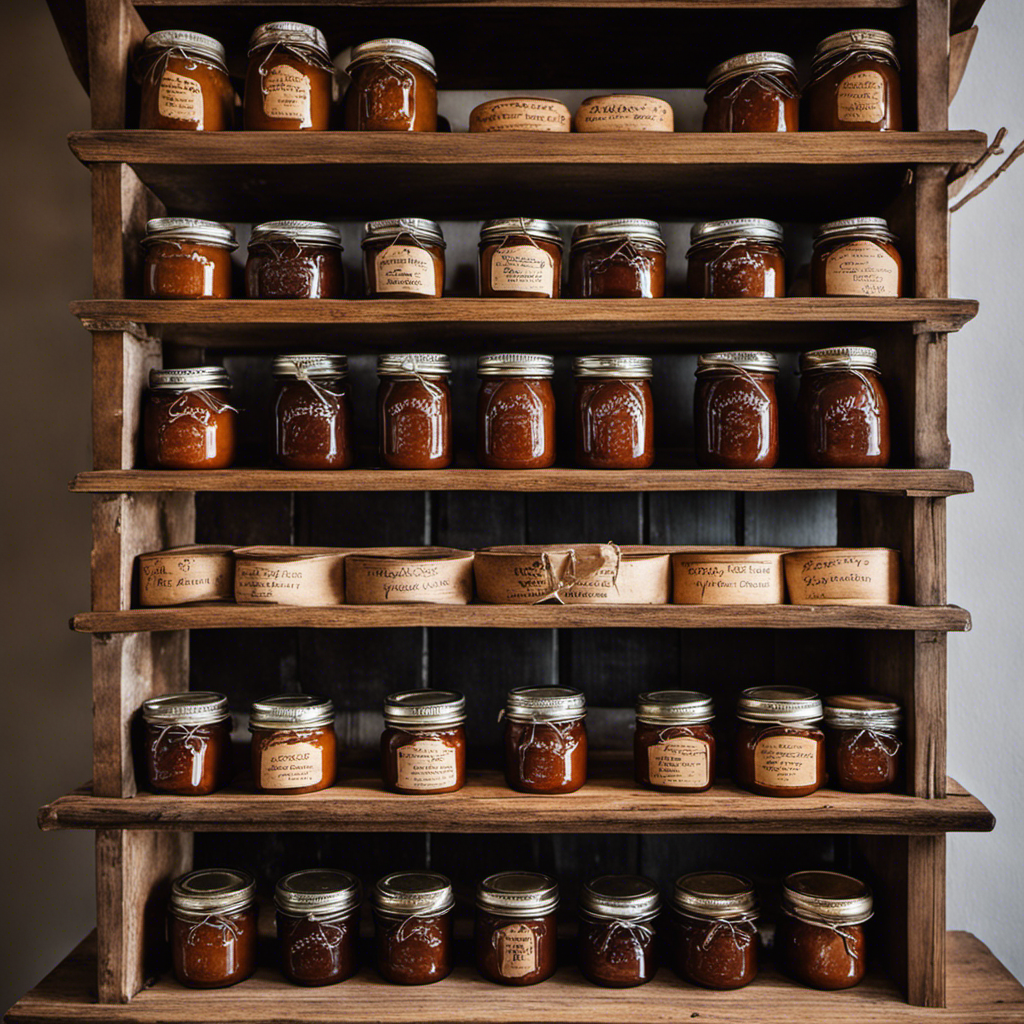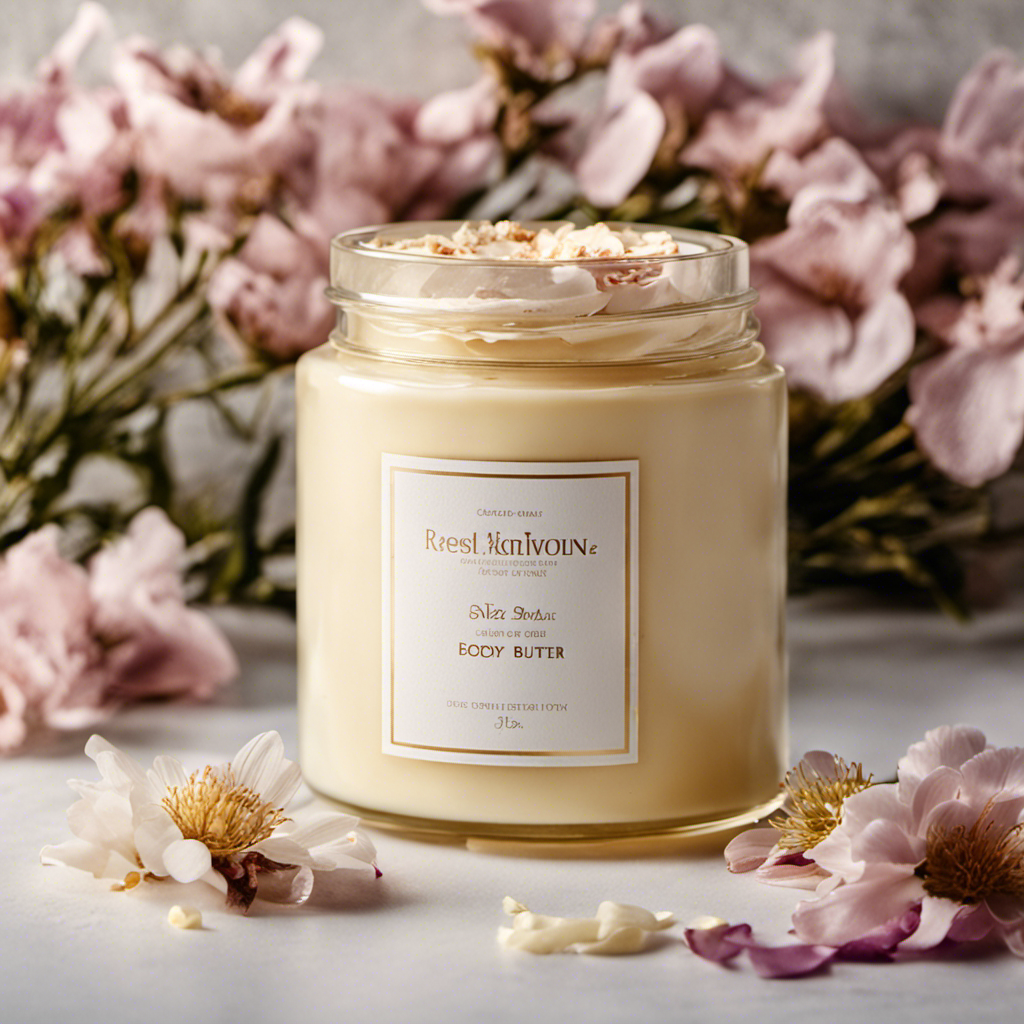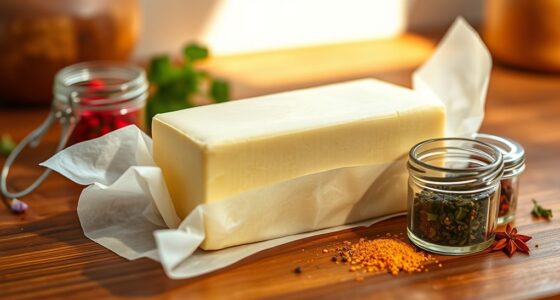As someone who is passionate about skincare, I have often pondered about the expiration date of shea butter. How long can this rich, moisturizing ingredient really last? Let me share with you the interesting findings from my research.
In this article, we’ll delve into the factors that affect shea butter’s longevity, the signs of it going bad, and how to extend its lifespan.
So, grab your favorite moisturizer and join me on this journey to uncover the secrets of shea butter’s freshness.
Key Takeaways
- Shea butter typically lasts for about two years.
- Factors such as quality and storage can affect the expiration of shea butter.
- Temperature, packaging, and contamination can affect the longevity of shea butter.
- To maximize freshness, store shea butter in a cool, dark place in airtight containers, and look out for signs of spoilage such as foul smell, discoloration, texture changes, or a bitter taste.
Shelf Life of Shea Butter
Shea butter is typically good for about two years, but it can last even longer if stored properly. The expiration of shea butter depends on various factors such as the quality of the butter and how it is stored.
To check the quality of shea butter, there are a few things you can do. First, examine the color. High-quality shea butter is usually a creamy yellow or ivory color. If the butter is white or has a grayish tint, it may be a sign of poor quality or improper storage.
Next, smell the butter. It should have a nutty, earthy scent. If it smells rancid or has a strong, unpleasant odor, it may be expired or of low quality.
Lastly, feel the shea butter. It should be soft, smooth, and easy to spread. If it feels grainy or gritty, it may have gone bad.
Factors Affecting Shea Butter’s Longevity
One factor that affects how long shea butter remains usable is its exposure to heat and light. Here are four key factors that can influence the quality and longevity of shea butter:
-
Temperature: Shea butter should be stored in a cool, dark place to prevent it from melting or becoming rancid. Avoid exposing it to extreme temperatures, as this can degrade its quality.
-
Packaging: Choose airtight containers or jars to store shea butter. This helps to protect it from air and moisture, which can cause it to spoil or lose its beneficial properties.
-
Contamination: Avoid introducing water or other contaminants into the shea butter. Moisture can promote the growth of bacteria or mold, compromising its quality and safety.
-
Shelf Life: Shea butter typically has a shelf life of 1-2 years when stored properly. Check the expiration date on the packaging and discard any shea butter that has exceeded this timeframe.
Storing Shea Butter for Maximum Freshness
To maximize freshness, make sure you store your shea butter in a cool, dark place and use airtight containers or jars. Storing shea butter without refrigeration is perfectly fine as long as you follow these guidelines.
Heat, sunlight, and air can all degrade the quality of shea butter, so it’s important to protect it from these elements. A cool, dark place like a pantry or cupboard is ideal for storing shea butter. Additionally, using airtight containers or jars will prevent any air or moisture from getting in and spoiling the butter. Glass or plastic containers with tight-fitting lids work well for this purpose.
By taking these precautions, you can ensure that your shea butter stays fresh and retains its beneficial properties for a longer period of time.
Now that you know how to store your shea butter properly, let’s discuss the signs of shea butter gone bad.
Signs of Shea Butter Gone Bad
When shea butter goes bad, it can develop a rancid smell and change in texture. Here are four indications of spoiled shea butter that can help you identify if it has gone bad:
-
Foul smell: Fresh shea butter has a nutty, earthy scent. However, if it smells off, sour, or unpleasant, it is likely spoiled.
-
Discoloration: Shea butter is typically creamy or yellowish-white in color. If you notice any dark spots or discoloration, it may be a sign of spoilage.
-
Texture changes: Spoiled shea butter can become grainy, clumpy, or greasy. It may lose its smooth and creamy consistency.
-
Off taste: If you accidentally taste the shea butter and it has a bitter or sour flavor, it is likely spoiled.
Extending the Lifespan of Shea Butter
If stored properly, shea butter can stay fresh and usable for an extended period of time. To preserve shea butter and ensure its longevity, it is important to follow a few simple guidelines. Firstly, store shea butter in a cool, dark place away from direct sunlight and heat sources. Exposure to heat and light can cause the butter to melt and go rancid. Secondly, keep the container tightly sealed to prevent air and moisture from entering. Oxygen and moisture can accelerate the oxidation process and lead to spoilage. Lastly, avoid using wet or dirty hands when scooping out shea butter from the container to prevent contamination. By following these steps, you can prolong the lifespan of shea butter and continue to enjoy its benefits in your skincare routine.
| Do’s | Don’ts |
|---|---|
| Keep in a cool, dark place | Expose to heat and sunlight |
| Seal container tightly | Leave container open |
| Scoop out with clean, dry hands | Use wet or dirty hands |
| Store in airtight container | Allow air and moisture to enter |
Frequently Asked Questions
Can I Use Shea Butter Past Its Expiration Date?
I wouldn’t recommend using expired shea butter on other parts of the body. The effects of using expired shea butter on the skin can be detrimental. It’s best to use fresh, unexpired shea butter for optimal results.
Can I Store Shea Butter in the Refrigerator to Extend Its Shelf Life?
Storing shea butter in the refrigerator can extend its shelf life. It’s a reliable way to preserve its freshness and quality. Other alternative storage methods include keeping it in a cool, dark place.
Does the Color of Shea Butter Indicate Whether It Has Gone Bad?
The color of shea butter can indicate if it has gone bad. Signs of spoilage include a rancid smell and a change in texture. Extending its shelf life can be done by refrigerating it or adding preservatives. Using expired shea butter on the face can have potential risks, but it can be repurposed for other uses.
Can I Mix Shea Butter With Other Ingredients to Make It Last Longer?
Mixing shea butter with preservatives can help extend its shelf life. By incorporating shea butter into homemade beauty products, you can enjoy its benefits for longer. Remember to store it properly to maintain its quality.
Can I Use Shea Butter on My Face if It Has Expired?
Using expired shea butter on your face can have potential risks, such as irritation or allergic reactions. It’s best to avoid using it and opt for alternatives like coconut oil or almond oil for skincare.
Conclusion
In conclusion, shea butter is a valuable skincare product with a relatively long shelf life. By understanding the factors that affect its longevity and implementing proper storage techniques, you can extend its lifespan and ensure maximum freshness.
Remember the adage, ‘An ounce of prevention is worth a pound of cure.’ Taking proactive measures to care for your shea butter will guarantee that it remains effective and beneficial for your skin for an extended period.
So, don’t let your shea butter go to waste; take care of it and enjoy its nourishing properties for years to come.









